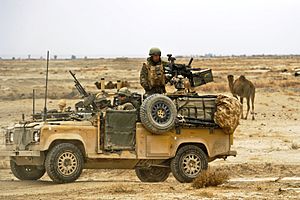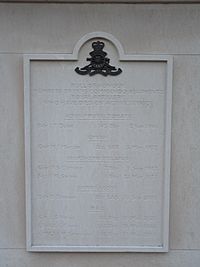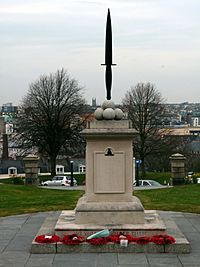Operation Barras facts for kids
Quick facts for kids Operation Barras |
|||||||
|---|---|---|---|---|---|---|---|
| Part of the Sierra Leone Civil War | |||||||
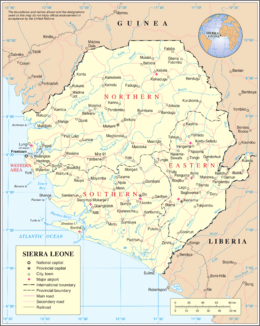 A map of Sierra Leone on which is marked Freetown (the capital, to the extreme west) and the nearby towns of Hastings (where the SAS and Paras prepared for the operation) and Masiaka (where the Jordanian detachment of UNAMSIL was based) |
|||||||
|
|||||||
| Belligerents | |||||||
| United Kingdom | West Side Boys | ||||||
| Commanders and leaders | |||||||
| John Holmes | Foday Kallay (POW) | ||||||
| Strength | |||||||
| 150 | 100–200 | ||||||
| Casualties and losses | |||||||
| 1 killed 12 wounded |
25+ killed 18 captured |
||||||
Operation Barras was a special mission carried out by the British Army in Sierra Leone on 10 September 2000. This happened during the later part of Sierra Leone's civil war. The main goal of the operation was to free five British soldiers. These soldiers were from the Royal Irish Regiment. They were held captive by a group called the "West Side Boys". Their Sierra Leone Army (SLA) guide was also captured.
The soldiers were on patrol on 25 August 2000. They were returning from visiting peacekeepers in Masiaka. They drove off the main road towards a village called Magbeni. There, the patrol of twelve men was surrounded. Many heavily armed rebels captured them. The soldiers were then taken to Gberi Bana, across the Rokel Creek.
Negotiators managed to get six soldiers released. But they could not free the remaining five and their guide. The West Side Boys started making impossible demands. Negotiators believed these were just delaying tactics. By 9 September, the soldiers had been held for over two weeks. The British government worried the soldiers might be killed or moved. So, they approved a military attack. The attack was planned for dawn on 10 September.
The ground attack was led by the Special Air Service (SAS). They were joined by the Special Boat Service (SBS). These special forces attacked Gberi Bana to rescue the Royal Irish soldiers. Another group, the 1st Battalion, Parachute Regiment (1 PARA), attacked Magbeni. This was a diversion to keep the West Side Boys busy. The operation successfully freed the five soldiers and their guide. Twenty-one Sierra Leonean civilians held by the West Side Boys were also rescued.
At least 25 West Side Boys were killed in the attack. One British soldier also died. Eighteen West Side Boys, including their leader Foday Kallay, were captured. They were later handed over to the Sierra Leone Police. Many West Side Boys ran away during the attack. Over 300 surrendered to UN peacekeepers within two weeks.
The operation helped people trust the British forces in Sierra Leone again. Their trust had been shaken when the soldiers were captured. After the mission, the British government gave more support to the UN peacekeeping mission (UNAMSIL). They helped politically and by sending staff officers. The success of 1 PARA in Operation Barras led to a new unit. This unit, the Special Forces Support Group, helps British special forces in big missions.
Contents
Why the Mission Happened
Sierra Leone is a country in West Africa. It used to be a British colony. By 2000, a civil war had been going on since 1991. The West Side Boys were a group involved in this war. They first fought against the government. Later, they fought for the government. They even worked with British officers for weapons.
But the West Side Boys refused to join the new Sierra Leone Army. Instead, they became bandits. They operated from two abandoned villages. These were Magbeni and Gberi Bana. They were on opposite sides of Rokel Creek.
British forces came to Sierra Leone in May 2000. Their first job was to help foreign people leave. This mission was called Operation Palliser. They secured the main airport and the capital, Freetown. After evacuating people, a new team arrived. This "Short Term Training Team" (STTT) was there to train the Sierra Leone Army. The 1st Battalion, The Royal Irish Regiment (1 R IRISH) took over this role in July 2000.
The Special Air Service (SAS) is a special part of the British Army. It was formed in 1941 during World War II. Their job was to go behind enemy lines. They would attack airfields and supply routes. The SAS became famous after rescuing hostages in the Iranian Embassy siege in 1980.
The 1st Battalion, Parachute Regiment (1 PARA) is part of the British Army's infantry. Soldiers in this regiment are called "paras". They specialize in jumping from planes. They often work closely with the SAS.
Soldiers Captured
On 25 August 2000, a patrol of 11 British soldiers left their base. They were led by Major Allan Marshall. An officer from the Sierra Leone Army, Lieutenant Musa Bangura, was their guide. They went to visit Jordanian peacekeepers in Masiaka.
During lunch, they heard that the West Side Boys were giving up their weapons. Major Marshall decided to investigate this on their way back. The patrol turned off the main road onto a dirt track. This track led to Magbeni, where the West Side Boys were based.
As they got close, a large group of West Side Boys surrounded them. They used a big gun on a truck to block the road. Major Marshall tried to resist but was beaten. He and his patrol were forced into canoes. They were taken across Rokel Creek to Gberi Bana.
The British government was allowed to negotiate for the soldiers' release. Lieutenant Colonel Simon Fordham led these talks. He was helped by hostage negotiators. The West Side Boys only met Fordham at the end of the dirt track. Fordham met their leader, Foday Kallay, there.
On 29 August, Fordham asked for proof the soldiers were alive. Kallay brought Major Marshall and Captain Ed Flaherty to the meeting. Captain Flaherty secretly gave Fordham a map. This map showed Gberi Bana and where the soldiers were held.
Two days later, on 31 August, five hostages were released. They were exchanged for a satellite phone and medical supplies. The West Side Boys kept the remaining six soldiers. They said these soldiers would not be freed until more demands were met. The freed soldiers were taken to a ship, RFA Sir Percivale, for questioning.
After the release, a West Side Boys spokesman, "Colonel Cambodia", called the BBC. He used the satellite phone to list their demands. These included new peace talks and releasing prisoners. British specialists used this call to find the exact location of the phone.
Things Get Worse
The captured soldiers later described a scary moment. Their leader, Kallay, threatened to shoot them. He wanted to know why they had entered his group's territory.
During the talks, relatives of some West Side Boys were brought to the camp. They asked the gang to free the British soldiers. The gang said they had nothing against the soldiers. But holding them got attention for their demands. These demands now included not being arrested. They also wanted safe passage to the UK for university. They even wanted guaranteed spots in the new Sierra Leone Army.
Planning the Rescue
Two negotiators from the SAS joined the talks. One of them pretended to be a Royal Irish major. He went to meetings with the West Side Boys. This helped him gather information in case an attack was needed. A medical officer from HMS Argyll was also brought ashore. He was ready to help if soldiers were freed or injured. HMS Argyll also held two Lynx attack helicopters. These helicopters were there to support any direct action.
As plans for a military rescue grew, it was clear special forces alone couldn't do it. There were too many West Side Boys in two places. So, the 1st Battalion The Parachute Regiment (1 PARA) was asked to help. A Company, led by Major Matthew Lowe, was chosen.
Some soldiers in A Company were new recruits. They had only finished training two weeks before. But Major Lowe decided not to replace them. He wanted to keep the company together. However, specialist units from 1 PARA joined A Company. These included snipers and heavy machine gun teams. This extra firepower was added because the West Side Boys had more fighters.
On 31 August, the company moved to South Cerney in the UK. They were told it was a training exercise. All mobile phones were taken away for security. Then, the whole company was told about the real mission. Major Lowe and his team flew to Dakar, Senegal, on 3 September. They continued planning and studied information from SAS patrols.
The British government worried that sending more troops might make the West Side Boys hurt the soldiers. They figured it would take 14 hours to launch an attack from the UK. So, the rest of the company also moved to Dakar. This reduced the response time.
To make things even faster, the power to launch the attack was given to the British High Commissioner in Freetown. The military decision was given to Brigadier David Richards. He was the commander of British forces in Sierra Leone. Two days later, SAS teams were secretly placed near the villages. They watched the West Side Boys. They also looked for places where helicopters could land.
The plan was for A Company to attack Magbeni. The SAS would attack Gberi Bana to free the soldiers. The Magbeni attack had several goals. It would destroy West Side Boys' weapons. It would also stop them from crossing the creek to help their friends. And it would help get back the Royal Irish patrol's vehicles.
They considered different ways to get the troops in. They could go by land or by water. But these ways would not keep the troops hidden. Also, the river had sandbanks and strong currents. So, they decided to use three Royal Air Force Chinook helicopters. These helicopters had been in Sierra Leone since the start of Operation Palliser.
Moving to Sierra Leone
By 5 September, the news was openly talking about a possible rescue mission. They noticed 1 PARA was getting ready. The next day, news reported British forces arrived in Sierra Leone "just in case". The British special forces stayed hidden, as usual. The media's focus on 1 PARA helped the SAS enter Sierra Leone without being noticed.
The A Company group, about 130 soldiers, arrived in groups. They joined the SAS at Hastings. This village was about 30 miles south of Freetown. At Hastings, the soldiers practiced shooting. They also rehearsed different scenarios. They used a small model of Magbeni built at the camp.
These rehearsals helped soldiers get used to the hot weather. Commanders decided soldiers would carry minimal gear. They would only take weapons, ammo, water, and medical supplies. This was to prevent heat exhaustion. Body armor was worn despite its weight. Commanders hoped the cool early morning air would help.
A day after the soldiers arrived, Brigadier John Holmes arrived. He was the Director Special Forces (DSF). He set up his headquarters in Freetown. From there, his team contacted the SAS teams watching the villages. They also talked to COBRA, the British government's emergency committee in London.
The Rescue Mission
The Decision to Attack
On 9 September, "Colonel Cambodia" said the six remaining soldiers would only be freed if a new government was formed. Negotiators realized the West Side Boys were just stalling. Around the same time, the SAS teams reported they hadn't seen the captive soldiers for four days. There were also worries the West Side Boys might move the soldiers further inland. This would make rescue much harder. Because of all these reasons, COBRA ordered the attack.
The operation was to start at first light on 10 September. The time before the attack was spent getting political and legal approval. The President of Sierra Leone, Ahmad Kabbah, gave his final approval. British Prime Minister Tony Blair also approved it. The Army Legal Corps got approval from the Sierra Leonean Police. Fordham, the negotiator, called the West Side Boys. He confirmed the soldiers were still alive. The final orders were given on the evening of 9 September.
Both villages were to be attacked at the same time. The SAS would attack Gberi Bana, where the Royal Irish soldiers were held. An SAS team and the paras would attack Magbeni. Besides the Royal Irish soldiers, the SAS also had to rescue Lieutenant Musa Bangura. He was the patrol's guide. A group of Sierra Leonean civilians held by the West Side Boys were also to be rescued.
The Attack Begins
The rescue force left Hastings around 6:15 AM. This was about 15 minutes' flying time from the West Side Boys' camp. Downstream from the villages, the helicopters waited. This gave the SAS teams time to get into position. They needed to stop the West Side Boys from hurting the captives. Once ready, the helicopters flew low along Rokel Creek. The strong wind from the Chinooks ripped off roofs in the villages. This included the roof of the building where the soldiers were held.
As the helicopters came closer, the SAS team at Gberi Bana started firing. They aimed at West Side Boys near the captives. This was to stop them from killing the soldiers. When the Chinooks arrived, they fired their powerful M134 Miniguns. Two Lynx attack helicopters also fired at the villages. This made the landing zones safer. They also destroyed heavy weapons the SAS teams had found.
Gberi Bana Attack
After the first helicopter attack, two Chinooks brought the SAS to Gberi Bana. The soldiers used ropes to slide down into the village. They immediately came under fire from the West Side Boys. Early in the fight, a British soldier was badly hurt. Trooper Bradley Tinnion was shot. He was taken back to the helicopter and flown to a medical team. Sadly, he died despite efforts to save him. The SAS continued to clear the village. They fought those who resisted and captured those who surrendered. Foday Kallay, the gang's leader, was captured here.
The SAS found the captive British soldiers when they shouted "British Army, British Army!" Lieutenant Bangura was harder to find. He had been held separately in a dirty pit. He had been treated very badly during his captivity. He had to be carried to the helicopter. In less than 20 minutes, all the captured Royal Irish soldiers and Bangura were rescued.
As the SAS finished, the Chinooks took prisoners and bodies from Gberi Bana. They went to the Jordanian UN peacekeepers. The bodies would be identified and buried. Captured West Side Boys were given to the Sierra Leonean Police. Civilians found were also taken to the peacekeepers to be identified. One civilian was killed in the crossfire during the attack.
Magbeni Attack
The third Chinook carried half of the A Company group from 1 PARA and an SAS team to Magbeni. The helicopter hovered low over the landing zone. The soldiers jumped from the back ramp. The SAS team had warned the ground was wet. But the soldiers were surprised to jump into chest-deep swamp water. Most of the first group waded through the swamp to the village. A small group stayed in the swamp to secure the landing zone. They waited for the Chinook to bring the rest of the company.
The returning Chinook, carrying the rest of A Company, came under heavy machine gun fire. It fired back with its Miniguns. A Lynx helicopter also fired at the machine gun until it stopped. The soldiers then joined the first group on the ground. As they moved forward, an explosion injured seven men. This included Major Matthew Lowe, the company commander.
Another soldier radioed for help. One of the Chinooks, on its way to Gberi Bana, landed. The injured soldiers were loaded onto the helicopter. It then picked up the Royal Irish soldiers and flew to RFA Sir Percivale. All 13 men were checked by medics.
The operation continued under Captain Danny Matthews, the second-in-command. Each group of soldiers attacked a different set of buildings. They had practiced this during training. The West Side Boys' ammunition storage was found and secured. After clearing the buildings, the paras set up defenses. They also searched the nearby jungle for any hiding West Side Boys.
The village was fully secure by 8:00 AM. The paras set up mines and mortars to stop any counter-attack. A team destroyed the remaining vehicles and heavy weapons. This included the truck that had blocked the Royal Irish patrol. The paras also got back the Royal Irish patrol's Land Rovers. These were carried away by the Chinooks. The last British soldiers left the area around 2:00 PM.
End of the Attack
The rescued soldiers were flown to RFA Sir Percivale. Fordham visited them soon after. He said they looked "remarkably well" but were "physically and mentally exhausted". After medical checks, the soldiers, who had been held for 17 days, called their families. Then they rejoined their battalion in Freetown. The paras were flown to RFA Argus and then back to the UK. The SAS team and their commanders also left Sierra Leone the day after the operation.
What Happened Next
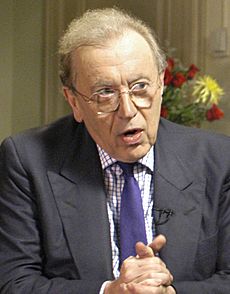
Operation Barras was the first time the SAS had rescued other British Army members. One British soldier, Bradley Tinnion, died after being wounded. Twelve other soldiers were injured. The British Ministry of Defence (MoD) did not officially say special forces were involved. But when it was known Tinnion was from the 29 Commando Regiment Royal Artillery, experts knew he was with special forces. Operation Barras was Tinnion's first mission as an SAS soldier.
At least 25 West Side Boys were confirmed killed. The real number might be higher, possibly up to 80. The gang fought harder than expected. Many West Side Boys were captured, and others ran into the jungle. Many who ran away later surrendered to Jordanian peacekeepers. Within two weeks of Operation Barras, 371 West Side Boys had surrendered. This included 57 children. Julius Spencer, Sierra Leone's Minister for Information, said the West Side Boys were "finished as a military threat".
Some who surrendered volunteered for the new Sierra Leone Army. Those accepted went into British-run training. Kallay, the gang's leader, recorded a message. It was broadcast on Sierra Leonean radio. He urged the remaining West Side Boys to surrender. He also identified the bodies of West Side Boys killed. They were later buried in a mass grave.
On the morning of the operation, General Sir Charles Guthrie, the head of the British Armed Forces, was on a TV show. The public first learned about Operation Barras from his interview. This happened while the operation was still finishing. Guthrie said they didn't want to attack, but negotiations were failing. The MoD released more details later that day.
Several awards were given to those who took part in Operation Barras. These included awards for bravery and distinguished service. Trooper Tinnion received a special mention for his bravery.
Major Marshall later moved to another regiment. Two of the soldiers from the patrol left the army. Two others moved to units based in Northern Ireland.
Long-Term Effects
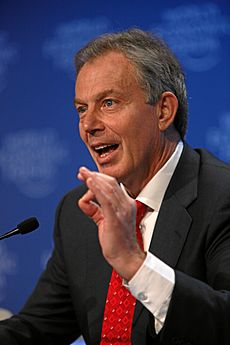
The capture of the Royal Irish patrol had made people in Sierra Leone lose confidence. They hoped the British would help end the civil war. The capture also embarrassed the British government. Operation Barras brought back trust in the British forces. One historian called it "a spectacular endorsement of the rule of law".
The British news celebrated the success of Operation Barras. But some wondered if Major Marshall made a mistake. They questioned why he turned off the main road. Both Marshall and Bangura said the Jordanian peacekeepers asked them to "take a closer look". However, the UNAMSIL commander denied this.
An investigation was launched into the patrol's capture. The report criticized Major Marshall. It said he "made an error of professional judgement". He went on an unauthorized visit to Magbeni.
The British Ministry of Defence and officers knew the risks of Operation Barras. An SAS soldier called it "a very grubby, green operation". It had "lots of potential for things to go wrong". This operation showed that Prime Minister Tony Blair's government was willing to accept casualties. They felt the cause was right.
Geoff Hoon, the British Secretary of State for Defence, summarized the operation's impact. He said it sent strong messages. First, it showed the UK would not deal with hostage takers. Second, he hoped the West Side Boys would accept the law. Third, he hoped others would think twice before taking similar actions.
One expert suggested the whole British operation in Sierra Leone depended on Barras's success. If it had failed, the UK might have pulled all its forces out. This would have raised questions about Tony Blair's policy of using force for humanitarian reasons.
The success of Operation Barras helped create the Special Forces Support Group (SFSG). This is a permanent unit. Its job is to help British special forces in big missions. The SFSG was formed in 2006. It was built around 1 PARA. It has supported special forces in Afghanistan and Iraq.
The capture of the patrol and the successful rescue made the British government increase its support for UNAMSIL. They helped politically and by sending staff officers. The British also put pressure on the Revolutionary United Front (RUF). They also pressured Liberia, which supported the RUF. This new approach, with a stronger UNAMSIL, helped end the Sierra Leone Civil War faster.
See also
- Operation Khukri, similar operation to rescue two companies of Indian soldiers
Images for kids


